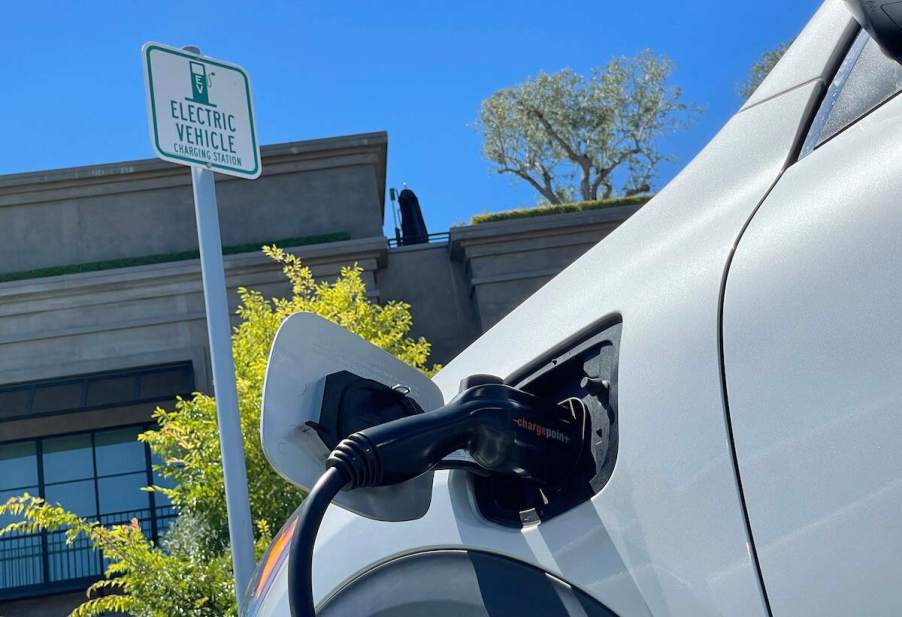
How Is the Word Choice of ‘Electrified’ Confusing Car Shoppers?
If you pay attention to commercials, you might have heard the term “electrified” to market new cars. Most shoppers assume the term applies exclusively to electric vehicles (EVs), which sparks confusion. So, what does this advertising strategy mean, and why do automakers use it to sell more vehicles?
A car doesn’t have to be an EV to be electrified
EVs (also known as BEVs, or battery electric vehicles) get their power from an electric battery and transmission, with no internal combustion engine (ICE) components. That means they can only be refueled through their charging ports. Public charging stations are available, but new EVs come with a 120-volt charger that buyers can use at home. According to Car and Driver, you can sometimes choose between an extended-range or standard-range battery.
However, there are still cars that have electric components without being fully electric. Plug-in hybrid electric vehicles (PHEVs) still have internal combustion engines, but they also have electric batteries and onboard chargers. These models get about 15 to 30 miles (or more) of electric range.
PHEVs and hybrids (which are sometimes called HEVs) also have electric generators and traction motors, along with DC/DC converters. Like inside an EV, all these components help run the vehicle more efficiently off electric power. That’s why you’ll almost always save more gas driving a hybrid over an ICE car, even if that hybrid doesn’t have a charge port.
Hydrogen fuel cell vehicles are wired a little differently from EVs, using an electric battery and a special type of electric traction motor. Only these cars have a fuel cell stack, facilitating the combination of hydrogen and oxygen electrodes to power the vehicle. According to the AFDC, the hydrogen gas needed to power the fuel cell is stored in the hydrogen fuel tank.
Other terms include plug-in electric vehicles (PEVs). That’s a catchall for any car that needs to be plugged into the electric charging grid. A PHEV might also be called an EREV (extended-range electric vehicle).
What do all these vehicles have in common?
Because these cars rely partially (or entirely) on electric power, it’s not wrong for automakers to claim any of the vehicles are “electrified.” However, that vague term requires more research from car shoppers when they’re browsing options. Most automakers group hybrids and PHEVs alongside EVs on their product pages, prompting some consumers to believe every car is an all-electric vehicle.
Why is this marketing strategy so popular?
The term “electrified” can confuse car shoppers, but automakers might be trying to achieve the opposite. To someone who knows next to nothing about cars, it’s unclear that “hybrid” or even “plug-in hybrid” indicates electricity is involved. The word “electrified” also sounds catchier, making it a stronger advertising tool. Additionally, it can indicate an automaker is taking more active steps toward total electrification than its competitors.
In any case, it doesn’t look like automakers will stop using this tactic anytime soon. In the “Electrified” section on Toyota’s website, only one of the 16 models is all-electric (the bZ4X). Toyota also uses “electrified” to market the fuel-cell-powered Mirai, the RAV4 Prime PHEV, and several cars with hybrid engine technology.
Jeep, Karma, and Chevrolet have also relied on a vehicle’s electric components to sell more units. For instance, Jeep markets the Wrangler 4xe as an “electric hybrid” even though a hybrid isn’t fully electric.
Bottom line: Don’t take “electric” and “electrified” at face value when shopping for your next car.


